Aid agencies say Sudan is suffering the worst humanitarian catastrophe in recent history, yet the crisis in the northeast African country remains unknown to most of the world.
Reporter Aengus Cox and cameraman Enda O'Byrne visited Sudan to witness the desperate conditions that people are living in.
"The world has paid deaf ears to the people of Nuba Mountains," the cry of Juma Idriss, Director of the Sudan Relief and Rehabilitation Agency (SRRA), the humanitarian wing of the military group that controls the remote mountainous area in Sudan's South Kordofan region.
Three million people live there and have traditionally been self-sufficient; building their own homes and growing their own food.
But with Sudan's civil war raging unchecked, the host community has welcomed one million internally displaced people - or IDPs - who have fled conflict and has had little support in doing so.
"There are two issues that caused the crisis in Nuba Mountains; one the coming in of IDPs, and two; last year we experienced a low rain season and the locusts destroyed the crops, whereby the people did not harvest enough," Mr Idriss says.
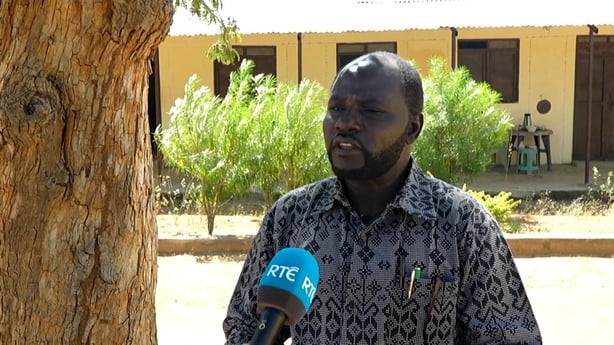
"The small food that was saved by the host community, they shared with the IDPs. So now the IDPs are being moved to the different camps whereby the national and international NGOs (non-governmental organisations) who are operating here in the Nuba Mountains are now giving their services to the IDPs and leaving out the host community."
This is a problem replicated across Sudan.
Driven from their homes by the fighting, more than 12 million people have fled to remote areas of the country.
But with aid agencies playing catch-up to reach them, both the new arrivals and the inhabitants of the areas where they gather are left to manage on limited resources that are becoming even more scarce.
The United Nations says it is the worst humanitarian catastrophe in recent history - with a displacement crisis larger than that of the wars in Ukraine or the Middle East.
Sudan is Africa's third-largest country, with a population of 50 million, and has been mired in civil war for 20 months.
Since April of last year the government army - the Sudanese Armed Forces - and the paramilitary Rapid Support Forces have been locked in battle for control.
The resulting bloodshed has led to the deaths of an estimated 150,000 people.
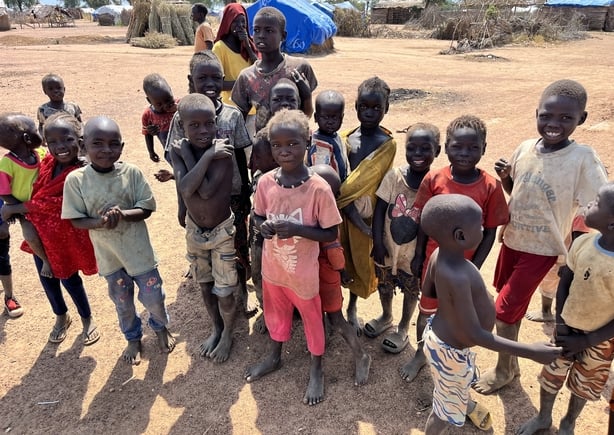
The SRRA Director believes that, because of conflict elsewhere in the world, there is not enough focus on Sudan.
"If you see the crisis in Gaza, if you see the crisis in Lebanon, the world is paying attention. They are not paying attention to the crisis of Nuba Mountains. The children are dying. Last month, up to this month, I have 715 dead cases, dying because of the hunger," Mr Idriss says.
High in the Nuba Mountains is the Mother of Mercy Hospital - the only full-service health facility for hundreds of kilometres.
There we meet its medical director, Dr Tom Catina, who explains that malnutrition has been a big issue this year.
"On our nutrition ward we were seeing easily ten times the number we normally see. Normally we'd have seven, eight, nine malnourished children on the ward. This year we had 60 or 70 for months."
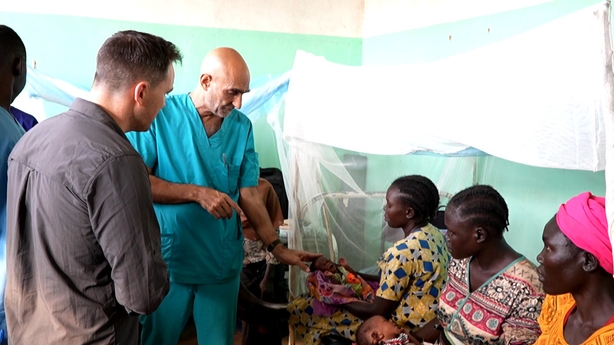
According to Dr Catina, there has also been a worrying rise in adult malnutrition.
"This year we've had several adults coming in with malnutrition, and pregnant women especially, are very vulnerable because they need extra caloric needs during the pregnancy.
"They get malnourished. One of the results of that is they can go into pre-term labour and deliver a pre-term infant ... they don't have any milk, the baby becomes malnourished and dies.
"There's only milk available during the rainy season for maybe one or two months. That's when the cows are lactating. Outside that time there's no grass, cows don't have enough milk.
"If the mother doesn't have any milk, you're really in deep trouble because powdered milk is very hard to come. It's just not available in the markets. If it's available, it's extremely expensive and it's way out of anybody's price range."
The reality of what he explained is playing out at a nearby displacement camp.
Recent arrivals, after walking for days, are a woman and six children who have a harrowing tale.
When they arrived there was no food - not an uncommon occurence with how remote the area is.
For three months, they sustained themselves on wild fruits, and boiled and ate grass and leaves just to feel full, before aid eventually reached them.
Three of the children suffered severe malnutrition and still bear the effects.
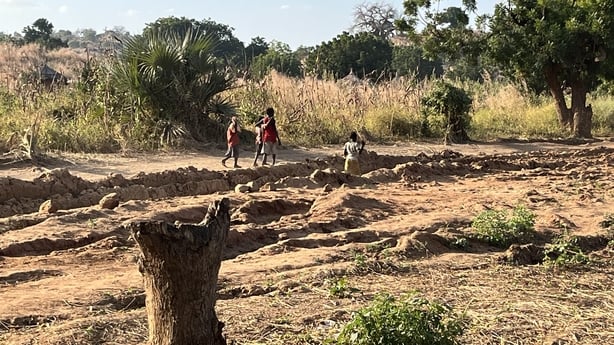
Sudan is a sprawling country, but its infrastructure has crumbled.
Roads are virtually non-existent outside the main cities, meaning getting supplies into places such as South Kordofan is a logistical nightmare.
We drive on bumpy dirt tracks wherever we go. They are littered with deep crevasses, pools of water and huge rocks.
In the dry season (from November to April) the 230km trip from the aid distribution centre in South Sudan to the camps takes around ten hours.
When it is wet, it can take more than two days.
Fighting has cut off supply lines to the north, leaving just one access route from the south.
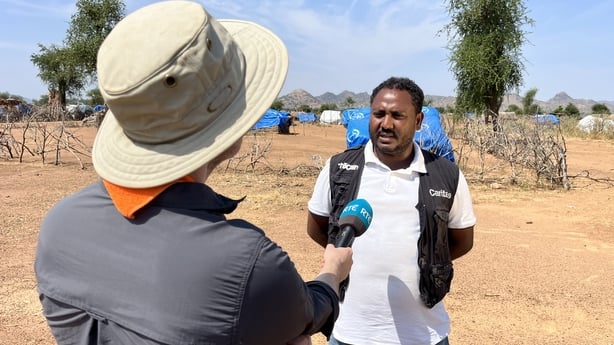
"In Sudan, close to 25 million people are facing a humanitarian crisis. The hardest challenge here is around logistics. The infrastructure is less developed and the funding is really low compared to the need," explains Trócaire's Acting Country Manager in Sudan, Mandefro Aynalem.
The agency is one of a small number of organisations attempting to make a dent in this escalating crisis, but securing attention and support is tricky.
"The conflicts in the world have increased significantly and the international community's attention has been diverted to the Ukraine war and currently to Gaza."
Sudan is the "most severe crisis in the world but it's underfunded," he says.
We need your consent to load this rte-player contentWe use rte-player to manage extra content that can set cookies on your device and collect data about your activity. Please review their details and accept them to load the content.Manage Preferences






